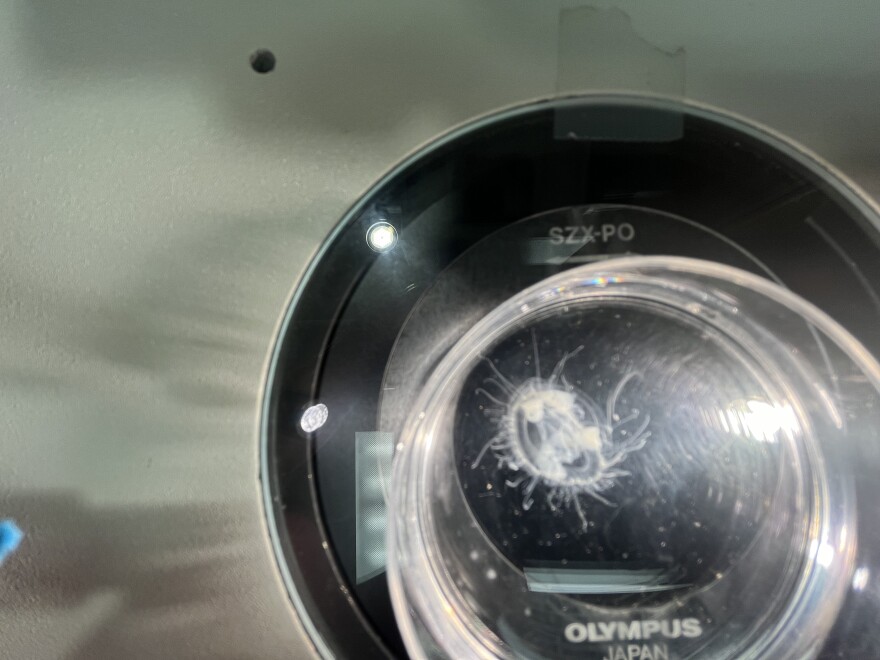A farmer recently discovered an unusual aquatic creature swimming on his property near Lake Panorama west of Des Moines.
“What are the odds of jellyfish surviving in a pond in Iowa? So my initial reaction was — ‘it's got to be something else' — but they definitely were jellyfish,” John Lorenzen, a southwest Iowa DNR fisheries management biologist, said.
Lorenzen said the freshwater species known as a peach blossom jellyfish originated from China, but has been discovered on every single continent on Earth, excluding Antarctica.

“So they're not common by any means, but they have been around, at least in North America, for a while,” he said. “They are quite small. We’re talking an inch in diameter at most.”
The Oskaloosa Community School District says high school freshman Oscar Schiferl spied the tiny jellyfish at the Russell Wildlife Area over the weekend while fishing. He brought a couple to school in a Mason jar to make sure his classmates would believe him.
Kim Bogenschutz, aquatic invasive species program coordinator for the DNR, said the mysterious animals do not pose any environmental concerns and can’t sting humans due to their tiny size.
“It's nothing that I would call invasive in terms of causing problems — they're really small. Their tentacles can't pierce our skin. They eat zooplankton," Bogenschutz said.
Bogenshutz said so far, no sightings have occurred on waterways with public swimming.

"I think these jellyfish are something that we just don't know that much about. When I dug into the data — I did find two previous reports from quarries in Iowa,” Bogenschutz added. "But — I think they're probably more widespread in Iowa than what we know.”
DNR officials say there are theories on how the jellyfish ended up in Iowa — including contaminated water from stocking fish, people illegally dumping their aquariums or migrating birds.
“Because they have been found in remote lakes in northern Canada, and there really was no other way these jellyfish could have gotten to those remote wilderness locations, except on waterfowl flying from place to place,” Lorenzen said. “However, in this case, if they came from waterfowl, you would expect them to be in other lakes close by, but they're not — so it’s a giant question mark.”
Lorenzen said the farmer thought he noticed the jellyfish several years ago — but, because of a complex lifecycle, didn’t see them until they recently reappeared.
“It looks like an upside-down bowl with tentacles coming off of it — however, that's just the Medusa stage of a jellyfish,” Lorenzen said. “There are other life stages that look like little polyps on vegetation or rocks, so they don't appear like jellyfish at all. The other life stages are probably there all the time — it's just they're not visible.”






